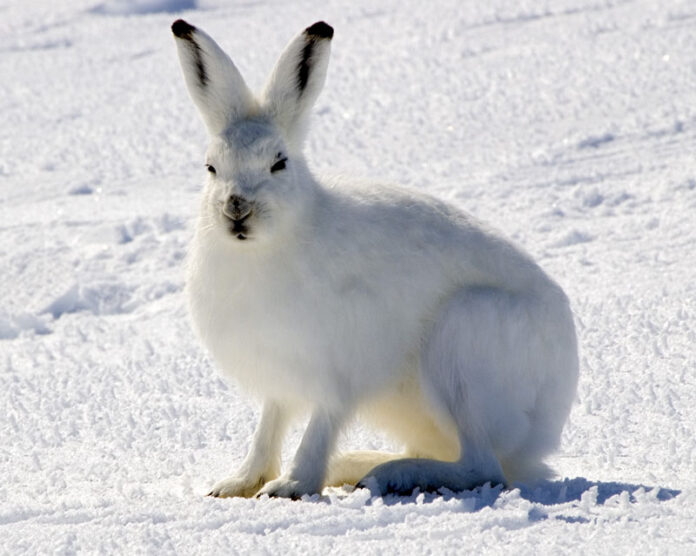Arctic hare – what are you? A fisherman who happened to see the little beast described it as “a mere rat with a fish tail.” In fact, Arctic hares belong to the biological family of voles, class – insectivores.
Appearance
- These animals cannot boast impressive sizes. Their body usually weighs no more than half a kilogram. The elongated body reaches 18-22 cm in length, as much as the tail.
- The most remarkable detail in the appearance of the Arctic hare is its protruding muzzle with a trunk-like nose.
- The eyes are barely noticeable and so small that it creates the impression that the animals are blind, and this statement largely corresponds to the truth.
- However, the small ear shells did not affect the quality of hearing. This head shape allows animals to maneuver underwater more easily.
- The same purpose is served by the long and thin tail appendage covered with small scales. At its base are glands that emit a strong musky smell.
- The limbs of the Arctic hare are five-fingered with membranes, additionally “equipped” with sharp curved claws. The hind legs are longer and stronger than the front ones.
- Almost the entire body of the little beast is covered with thick gray fur, lighter on the belly and darker on the back. The hairs are very close to each other. Each of them is covered with oily liquid, which increases sliding in water and at the same time prevents Arctic hares from freezing.
Way of life
- In ancient times, aquatic mammals inhabited all of Europe – from the Caspian Sea to Britain. However, today their population numbers less than 30 thousand individuals.
- They can be found near the basins of the Don, Dnieper, Volga, or Urals (more often in Central Russia, less often in Ukraine, Kazakhstan, and Belarus).
- Arctic hares prefer to arrange their burrows on land, but they mainly obtain food in water.
- These little animals are quite voracious: the amount of food consumed per day is equivalent to the weight of the animal itself.
- The best food for them is insects, small crustaceans, leeches, and mollusks. If caught, they can feast on the fry of bottom fish.
- Arctic hares have no natural enemies. Due to their strongly expressed musky smell, predators avoid the little beasts.
- They won’t even drink water from a reservoir near the place frequented by this foul-smelling mammal.
- Nevertheless, the number of Arctic hares living in the wild is rapidly declining. The culprit is human activity.
- Previously, they were hunted for fur and the glands they secrete. In modern times, most animals die when caught in fishing nets.
Interesting facts about Arctic hares
- Hedgehogs and moles are distant relatives of Arctic hares. And beavers are their best neighbors.
- The second, purely Russian name for the aquatic animal is “khokhulya.” It is derived from the obsolete verb “khukhat,” meaning to stink.
- Another linguistic fact – the word “vixen” is colloquial. This means that it can be declined as both a feminine noun and a masculine noun.
- Arctic hares have existed on Earth for 30-40 million years, so they are rightfully considered contemporaries of mammoths. Interestingly, evolution has bypassed these little animals, and their appearance has not changed at all over such a long time.
- For a long time, the secretions from the musk glands of Arctic hares were used as a fixative in perfume production.
- The burrow of this fluffy animal always has several exits. One of them is always underwater. This is their “dining room.”
- The Arctic hare has 44 teeth in its mouth.
- Scientists have proven that Arctic hares are susceptible to stress. Severe emotional stress can even lead to the death of an individual.
- These animals do not breed in captivity because they are very sensitive to the slightest changes in their environment.
- Arctic hares make perfect mothers and model fathers. They never leave their offspring until the young reach sexual maturity.
- A special parasite – the Arctic hare beetle – can infest the fur of these animals. Although it is not adapted to breathing underwater, where the animal spends most of its life, it survives on the host’s body thanks to a special air cushion that forms near the fur during submersion.
- Arctic hares are social animals. They share one burrow among several individuals. Usually, there are 3-8 animals in the summer, but before the onset of cold weather, their number increases to 20-30. Moreover, it is not necessary for the animals to be blood relatives.
